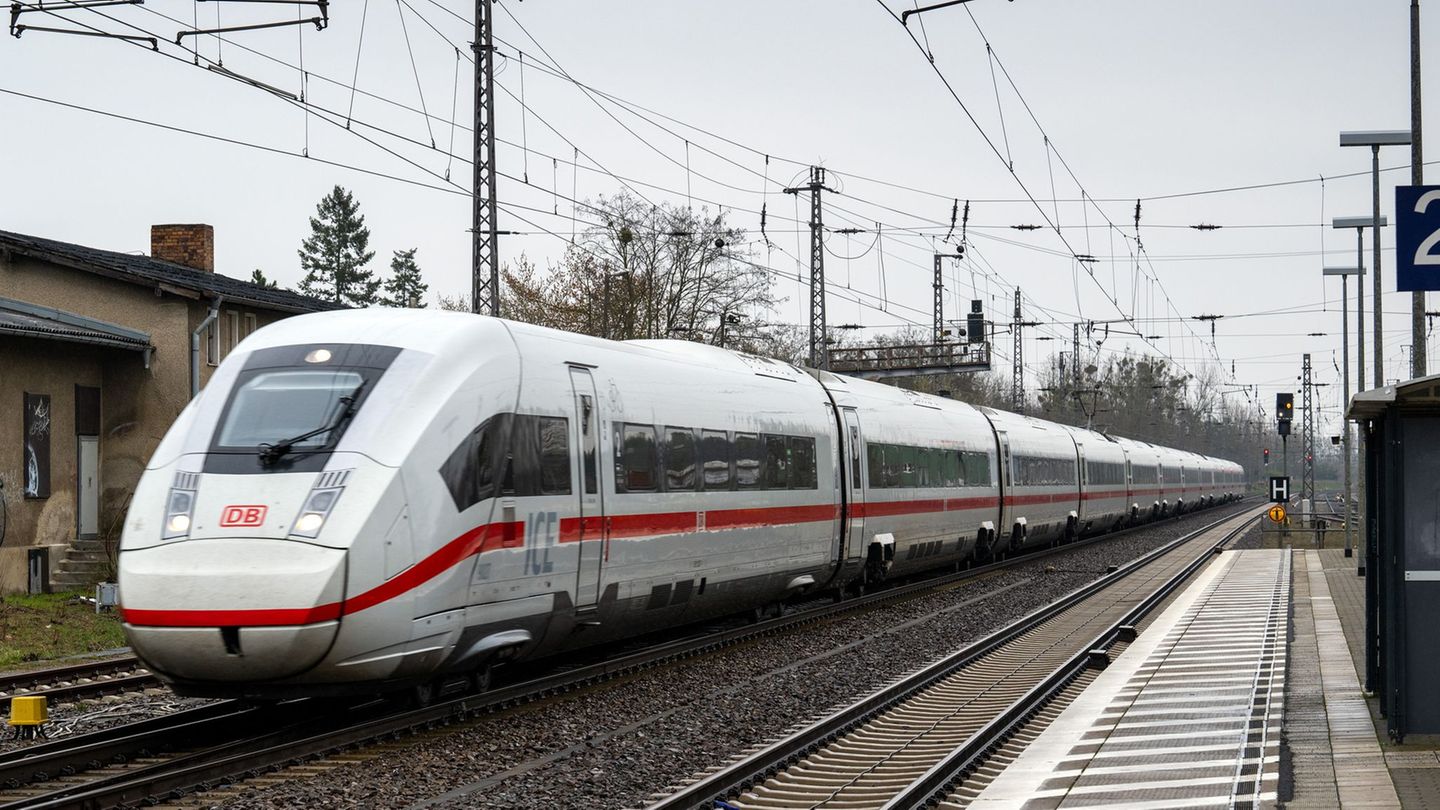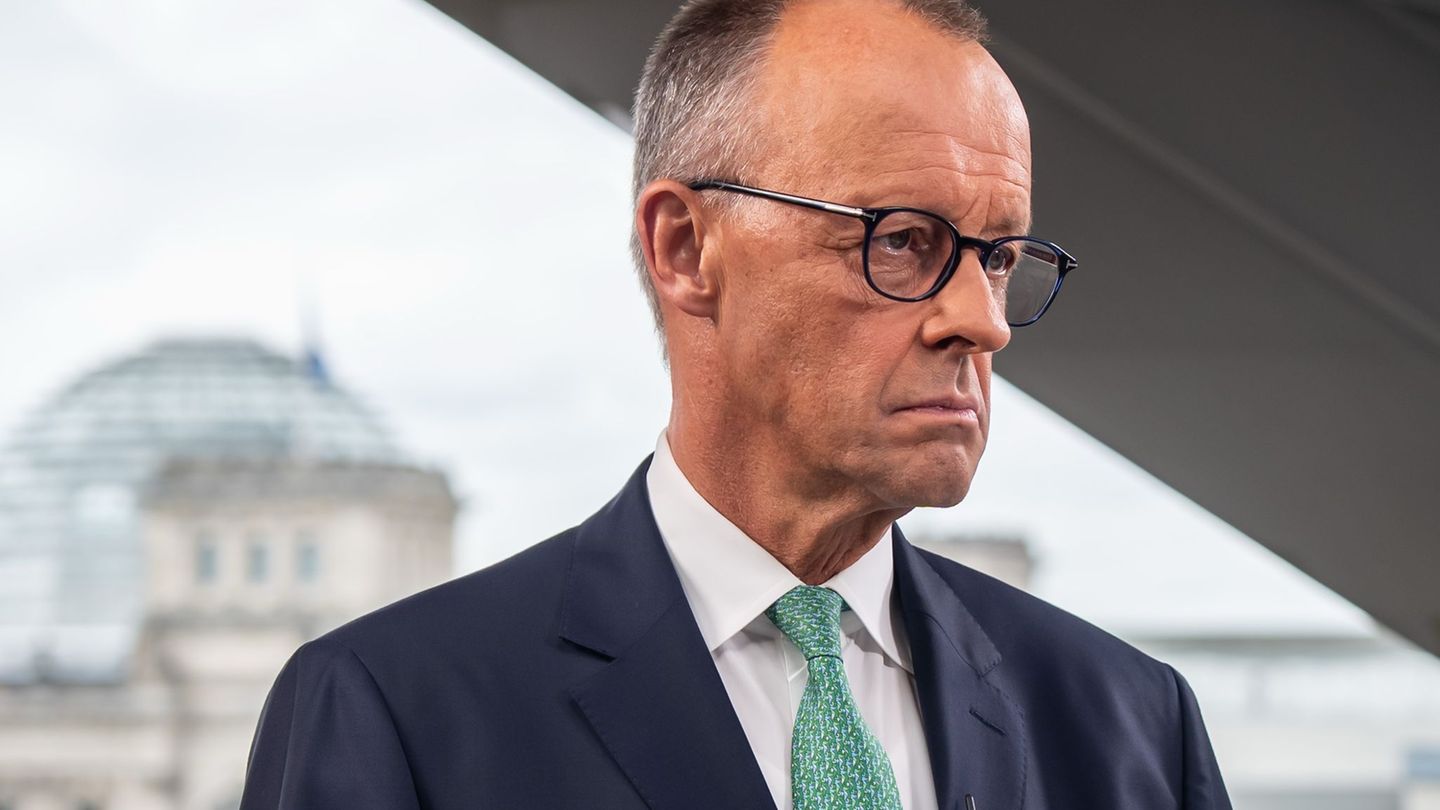Rail traffic
Railway rejuvenated fleet – passenger association warns of bottlenecks
Copy the current link
Add to the memorial list
The railway wants to rejuvenate its long -distance fleet with numerous new trains. Old series are retired. The Pro Bahn passenger association warns of bottlenecks on some connections.
Too old, too old, too little, too few seats: the long-distance fleet of Deutsche Bahn is said to be younger, the average age of the ICE and IC trains decreases from 18 years to 12 years by 2030. A building block for more reliability on the rail.
But the Pro Bahn passenger association fears that too many old trains are retired and too slowly replaced by new ones. Federal Executive Board Lukas Iffländer warns less access on some routes.
ICE 4 completely delivered
The fleet modernization on the train is in full swing. Already in March of last year, the last of a total of 137 new ICE 4 was delivered to the train by the manufacturer Siemens Mobility. It is the first long-distance train with bicycle parking spaces.
Otherwise, the vehicles have at least 444 seats per train and get a speed of up to 265 kilometers per hour. They now form the backbone of the ICE fleet of the federal group. With them, the number of ICE trains increased from around 270 in 2017 to around 400.
For some years now, the delivery of the ICE 3 NEO, a new edition of the previous ICE 3 series. 90 of these trains should be in operation by 2028. This year 15 ICE 3 Neo will be added, in the next 16, as the train announced on request. Among other things, they are characterized by frequency -permeable windows for better cell phone reception.
So far, the NEO has been used on the high-speed lines between North Rhine-Westphalia and Munich via Frankfurt and Stuttgart as well as on international connections from Frankfurt to Amsterdam and Brussels.
Delivery problems at the ICE L continue
However, there are delivery problems with another new order: the ICE L from the Spanish manufacturer Talgo. The train ordered 79 trains. Actually, the first should be traveling in autumn last year. Now delivery should take place in the second half of this year at the earliest. Four of the trains could still come in 2025, the train said. Visually, the vehicles remind more intercity than ICE trains.
“DB’s fleet strategy has the clear goal of rejuvenating and modernizing the fleet to stabilize the company,” emphasized the group. That works. The availability of the ICE 4 and ICE 3 neo-trains is significantly higher than in older series. The proportion of drive disorders between 2019 and 2024 could be reduced by 58 percent via improved maintenance concepts.
So far, however, the new trains have not led to more punctuality. More than a third of all long -distance trains are still late.
Passenger association criticizes chaotic vehicle strategy
The Pro Bahn passenger association does not convince the railways. “Overall, the vehicle strategy seems to us to be extremely chaotic,” said board member Iffländer. He refers primarily to exhausts of older trains. “We will get fewer seats on many connections, at least temporarily until the new trains are there at some point.”
The East-West connections Wiesbaden-Frankfurt-Leipzig-Dresden and Hamburg-NRW-Bonn-Frankfurt-Nuremberg-Vienna are particularly affected, and the second part of the train will be missing more often in the future. “For us passengers, this means briefly and briefly: it is getting tight and full. Transport turnaround – no, thank you,” said Iffländer.
Specifically, the train took out 14 older ICE 3 of the 406 series in April this year. Ten other trains of the 415 series – the so -called ICE T – are also considered prone to interference and maintenance -intensive and should gradually retire by the end of the year.
There are also around three dozen ICE 2 trains that have been in use since 1996. By the end of 2027, they should be taken out of circulation gradually. After all, the railway recently sold 17 double -decker trains of the “Intercity 2 Kiss” type to the Austrian Bundesbahn. The train only used the trains in 2019, “to bridge delivery problems with other vehicles”, as it was said. These have now been remedied.
Fleet number will fluctuate
It is questionable whether the elevating trains could be replaced quickly enough by the sometimes delayed new additions, emphasized Iffländer. The consequences are already visible. “The early train from Leipzig does not apply to the timetable change because it has so far been driven with a five -part ICE T to be parked at the change of timetable,” he said.
The railway admits that the ICE fleet number will be subject to new fluctuations in the coming years as a result of the exposure and the inlet. In the medium term, however, the number remains “at a comparable level with increasing number of seats”.
Iffländer is also skeptical. “Theoretically grows on paper until 2029, but practically it drops due to poor fleet availability, since new vehicles are now often defective in front of the works,” he said.
While the fleet on the railway is younger, but not necessarily larger, competitor Flixtrain has recently announced a larger train offensive: the company has ordered around 30 new express trains. There is also the option to 35 other trains, as Flixtrain announced. Including maintenance, the package therefore costs up to 2.4 billion euros. Flix also ordered the trains from the Spanish manufacturer Talgo. It is unclear to when to be delivered.
dpa
Source: Stern




